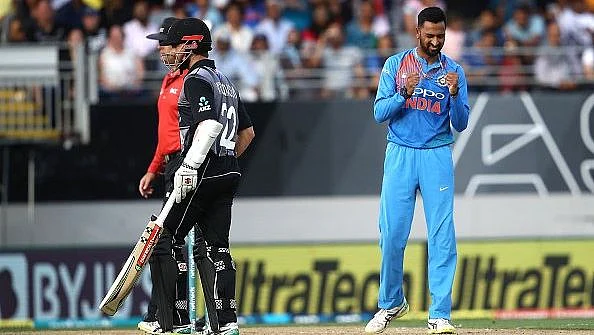The Decision Review System, or DRS, in cricket has split opinion – and hairs – since it was introduced into the game.
Many across the globe, from players to administrators, remain unconvinced about the usage and functionality of technology in its present form – and the second T20 international between New Zealand and India at Auckland showed why.
Kiwi batsman Daryl Mitchell was adjudged to be LBW to Krunal Pandya despite Hot Spot suggesting a clear snick on the delivery.
What’s the fuss about? Incorrect decision do come along every now and then, right?
Well, guess what? This wasn’t an on-field decision: Mitchell was given out after – and despite, some will argue – a DRS call.
After being given out by the on-field umpire, Mitchell decided to review the decision after consulting captain Kane Williamson, who was at the non-striker’s end.
The duo seemed confident that Mitchell, who was playing only his second international game, had feathered the ball, and that’s what propped up when the third umpire asked for a Hot Spot replay.
Shaun Haig, the third umpire in question, however decided to go for a view of the Snickometer as well, and when that showed no spike, he stayed with the original on-field call once ball-tracking suggested the delivery was going on to hit the stumps.
Williamson expressed his dismay to the umpires and asked to Mitchell to stop.
The situation became a little animated when former captain and wicketkeeper Mahendra Singh Dhoni had a word with Williamson and the umpire in the presence of captain Rohit Sharma.
But in the end, the on-field umpires went by the rule book and Mitchell had to make his way back to the dugout. The only way Mitchell could have survived was if Rohit had called him back after replays on the big screen made it clear that there was an inside edge before the ball hit the batsman's pads.
It sparked instant debate on social media, with cricketers and commentators alike left baffled by the decision.
(With inputs from PTI)
(At The Quint, we question everything. Play an active role in shaping our journalism by becoming a member today.)
